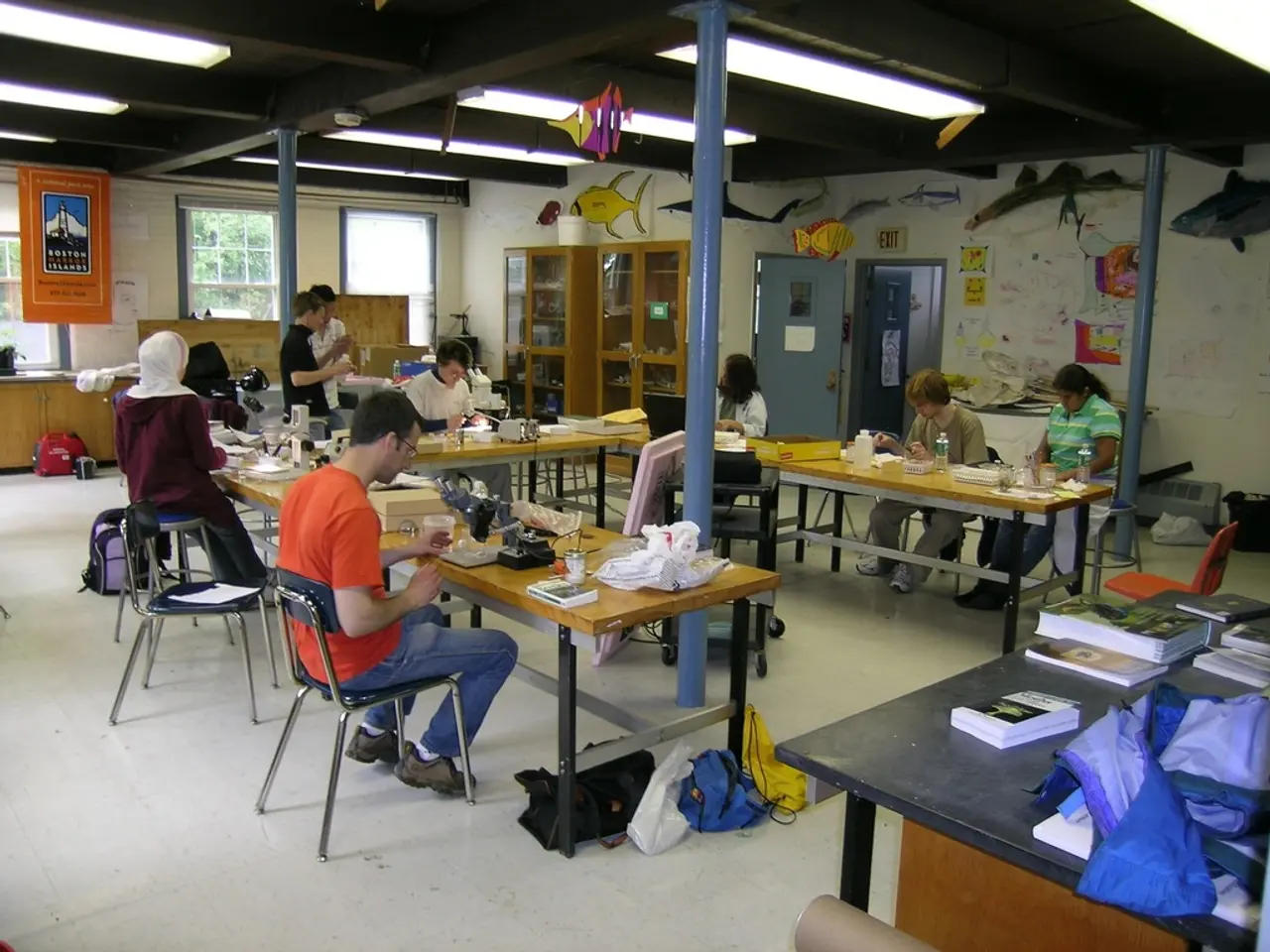Freshmen Ages Examined: Examining Both Common and Uncommon Age Ranges of College Inaugurates
Age Diversity in College Freshmen: The Growing Presence of Older Students
The traditional image of college freshmen as 18 or 19-year-olds is gradually changing, with a substantial and growing number of older students making their way into U.S. classrooms.
Factors such as taking a gap year, delaying college due to financial constraints or family responsibilities, or attending community college before transferring are among the reasons that shift a student's age at college entry.
According to recent statistics, about 65% of undergraduates are aged 18-24, while around 16% or roughly 2.6 million students are 30 or older [1][5]. This trend is a reflection of the increasing number of non-traditional students who start college later in life.
Colleges are also evolving to accommodate these diverse student populations. They are increasingly admitting students based on holistic criteria beyond standardized tests and offering resources and support systems tailored to the needs of older students, such as mentoring programs, career counseling, and student organizations [2][5].
The Impact of Age on College Experience
Older students often exhibit strong motivation and focus, with many reporting high academic achievement and clear career goals [4]. Despite initial self-doubt about fitting in, they tend to demonstrate strong persistence.
On the other hand, younger freshmen face higher dropout rates, especially in their first academic year, with roughly 18-22% of full-time, first-time freshmen dropping out annually [3].
Non-traditional students may face challenges integrating socially with younger peers, but many overcome this by leveraging life experience, clarity of purpose, and sometimes balancing school with work or family [4][5]. Older students are more likely to be financially independent, work while enrolled (40% full-time jobs), have dependents (24%), or be veterans/military-affiliated (6%) [5].
First-generation and economically disadvantaged students, often older or returning learners, also report higher risks of dismissal or dropping out, underscoring the importance of institutional support to accommodate diverse ages and life circumstances [3].
A Rich Learning Environment
The interaction between younger and older freshmen creates a rich learning environment, fostering a sense of community and promoting a more well-rounded educational experience. The growing diversity in age among college freshmen reflects broader social and economic changes impacting college enrollment and student experiences.
As the trend of delayed college enrollment continues, it is crucial for institutions to provide the necessary resources and support systems to ensure the success of all students, regardless of age.
- [1] National Center for Education Statistics. (2020). Fast Facts: Enrollment. Retrieved from https://nces.ed.gov/fastfacts/display.asp?id=372
- [2] The Chronicle of Higher Education. (2019). The Nontraditional College Student. Retrieved from https://www.chronicle.com/interactives/nontraditional-student
- [3] National Student Clearinghouse Research Center. (2020). Fall 2019 National Student Retention Rate. Retrieved from https://nscresearchcenter.org/wp-content/uploads/2020/02/Fall-2019-National-Student-Retention-Rate.pdf
- [4] Tinto, V. (2017). Leaving College: Rethinking the Causes and Cures of Student Attrition. Harvard University Press.
- [5] The College Board. (2020). Profile of First-Year College Students: 2020. Retrieved from https://research.collegeboard.org/pdf/profile-first-year-college-students-2020.pdf
Older students, who make up approximately 16% of undergraduates, can benefit from campus resources and support systems like mentoring programs, career counseling, and student organizations, promoting personal growth and learning during their education-and-self-development journey. Despite potential challenges in integrating socially, older students' life experience, focus, and clarity of purpose can help them overcome such obstacles, contributing to a rich learning environment that fosters a sense of community and a more well-rounded educational experience.




